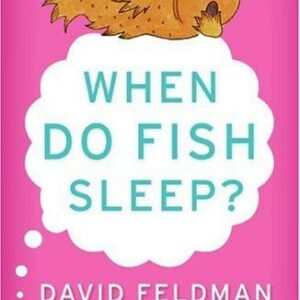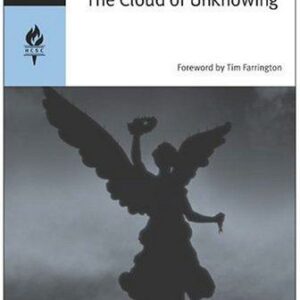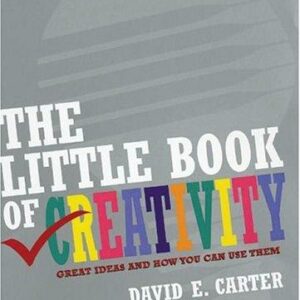Every Living Thing
$35.00
| Title | Range | Discount |
|---|---|---|
| Trade Discount | 5 + | 25% |
- Description
- Additional information
Description
An epic, extraordinary account of scientific rivalry and obsession in the quest to survey all of life on Earth—a competition whose consequences still reverberate today—from the bestselling author of A Sense of the World
“[A] vibrant scientific saga . . . at once important, outrageous, enlightening, entertaining, enduring, and still evolving.”—Dava Sobel, author of Longitude
In the eighteenth century, two men—exact contemporaries and polar opposites—dedicated their lives to the same daunting task: identifying and describing all life on Earth. Carl Linnaeus, a pious Swedish doctor with a huckster’s flair, believed that life belonged in tidy, static categories. Georges-Louis de Buffon, an aristocratic polymath and keeper of France’s royal garden, viewed life as a dynamic swirl of complexities. Each began his task believing it to be difficult but not impossible: How could the planet possibly hold more than a few thousand species—or as many could fit on Noah’s Ark?
Both fell far short of their goal, but in the process they articulated starkly divergent views on nature, the future of the Earth, and humanity itself. Linnaeus gave the world such concepts as mammal, primate, and Homo sapiens, but he also denied that species change and he promulgated racist pseudoscience. Buffon formulated early prototypes of evolution and genetics, warned of global climate change, and argued passionately against prejudice. The clash of their conflicting worldviews continued well after their deaths, as their successors contended for dominance in the emerging science that came to be called biology.
In Every Living Thing, Jason Roberts weaves a sweeping, unforgettable narrative spell, exploring the intertwined lives and legacies of Linnaeus and Buffon—as well as the groundbreaking, often fatal adventures of their acolytes—to trace an arc of insight and discovery that extends across three centuries into the present day.“As Jason Roberts reveals in this vibrant scientific saga, taxonomists take up their mission with a mix of insight and foresight, colored by their moment in history, not to mention their foibles, their vanity, and their all-too-human prejudices. . . . A story at once important, outrageous, enlightening, entertaining, enduring, and still evolving.”—Dava Sobel, author of Longitude
“An epic account of an impossible scientific undertaking and a rare blend of deep research, page-turning storytelling, and the beauty of the natural world. . . . Every Living Thing brings history to vivid life and animates an essential story with an ever-present sense of wonder.”—Charles Duhigg, author of Supercommunicators and The Power of Habit
“A skillfully told, ambitious-in-the-best-possible-way tale about hubris, curiosity, rivalry, and deep, deep obsession . . . The impossible race between these two men to catalogue the entirety of the natural world winds up illuminating some of the best and worst stuff about being human.”—Jon Mooallem, author of This Is Chance!
“A lively, panoramic contribution to the history of science.”—Kirkus Reviews (starred review)Jason Roberts is a writer of fiction and nonfiction. His previous book, A Sense of the World: How a Blind Man Became History’s Greatest Traveler, was a national bestseller and finalist for the National Book Critics Circle Award. A contributor to McSweeney’s, The Believer, and other publications, he lives in Northern California.One
Of the Linden Tree
the landscape of seventeenth-century sweden was dotted with natural shrines. These were linden trees, viewed in a semi-mystical light by Swedes who associated their heart-shaped leaves and fragrant blossoms with Freyja, the Nordic goddess of love and fertility. Pregnant women visited them to gather leaves, hoping to invoke Freyja’s protection during childbirth by sleeping on pillows stuffed with them. Travelers sought shelter under their branches during storms, believing that Thor deferred to Freyja by aiming his lightning strikes elsewhere. Their silver trunks were favored sites for both romantic declarations and business negotiations, since Freyja was thought to punish anyone speaking lies beneath their boughs.
One ancient linden tree was especially revered. It grew near the border of the southern Swedish province of Småland, in a field straddling Hvittaryds and Jonsboda parishes, rising in a massive triple trunk to spread a canopy shading most of an acre. Nestled near its roots lay a cairn of piled stones, dating to the Bronze Age and thought to mark the resting place of a Viking warrior. The natives of Småland had long since declared the tree and its grounds a våarträd, a treasured landmark believed to extend its protection to all of the surrounding countryside.
For the family that owned the land, that brought both honor and a special duty of care: Våarträds were customarily left as undisturbed as possible, even when they occupied what would otherwise be productive farmland. For generations the family tended to the tree. When twigs or branches fell, they carefully gathered them up (it was bad luck to break even a single one) and placed them in neat piles atop the roots, leaving them to weather in peace. They erected a perimeter fence to protect the tree from the bunting, rubbing, and ringbarking of grazing animals, but kept a path to the trunk accessible to visitors.
The family had no name. This was common in rural Sweden, where surnames were rarely necessary; one’s lifelong presence on ancestral land served as identity enough. Most males, when required to provide one, adopted the simple patronymic of adding -son to their father’s given name, a practice that would eventually populate Sweden with a healthy percentage of Johannsons, Petersons, and Svensons. But in the fall of 1690, a sixteen-year-old named Nils made a different choice. Instead of becoming Nils Ingemarsson, he decided to commemorate his family’s tree by adopting the surname Linnaeus. It meant “man of the linden tree,” not in Swedish but in Latin.
The choice betrayed ambition. Nils was leaving to attend the University of Lund, 150 miles away, where Latin was the language of academic discourse. Many professional scholars adopted Latin versions of their surnames, which is why Michel de Nostredame is better known as Nostradamus, and why Nikolaj Kopernik is remembered as Nicolaus Copernicus. Assuming a latinized name in advance was a jarring, presumptuous choice in the province of Småland. But provincial life was what Nils intended to leave behind.
…
Nils Linnaeus did not stray as far from the linden tree as he had hoped. His family’s farming income was enough to send him to the university, but not enough to keep him there. He’d arrived with barely the money for a single year’s tuition, hoping to fund the rest with a combination of scholarships and part-time work. When those failed to materialize, he abandoned his education and for most of the next decade wandered through Sweden and neighboring Denmark, establishing himself nowhere and in no profession. He was by all accounts a friendly presence, a genial, outgoing soul. He was also in no particular hurry to make his way home.
He was twenty-seven when he finally returned, to familial disappointment and the challenge of finding a livelihood. Lacking the resources to set himself up as a farmer in Småland, he began studying to join the Lutheran priesthood. Two years later, the freshly ordained Reverend Linnaeus found an entry-level posting as a comminister, or auxiliary curate, in the village of Stenbrohult, a farming community on the shores of Lake Möckeln. It was only twenty miles from his birthplace and his namesake tree. In 1706, he married Christina Brodersonia, the daughter of his immediate superior, who changed her name to Christina Linnea (“woman of the linden tree”). On May 23, 1707, she gave birth to their first child, a son. In honor of the king of Sweden, they named him Carl.
The birth and early childhood of Carl Linnaeus is densely ornamented, with family legend and later attempts to render him a kind of secular saint, destined for green paths of glory. Apocryphal accounts hold that the boy was born with a head of snowy white hair, the mark of a skogsanda, or forest spirit, which later darkened to brown. The infant was strangely fussy and inconsolable, soothed only by his mother placing bouquets of flowers above his crib. “Flowers became Carl’s first and choicest plaything,” an early biographer wrote. “The father took the little year-old son out with him sometimes into the garden, putting the child on the ground in the grass and leaving a little flower in his hand with which to amuse himself.”
There were flowers in abundance. By now the Reverend Linnaeus had succeeded his father-in-law as curate and moved his family to the rectory of Stenbrohult, where, free from the need to travel throughout the parish, he took up gardening as a hobby. The reverend’s garden took on formal proportions, encompassing several hundred floral varieties and sporting as its centerpiece a “feast” of flowers—a round, raised soil bed in the shape of a table, set with plantings carefully tended to look like heavily laden dishes. Shrubs, planted at table’s edge, were trimmed in topiary fashion to perform the roles of dinner guests. Young Carl is said to have spent hours in their imaginary company, and more hours still tending to a garden patch of his own nearby. According to one early biographer, the boy was “for ever searching fields and woodlands in quest of flowers. . . . His loving mother complained that no sooner had he got a new flower than he cruelly pulled it to pieces, for the little fellow loved to penetrate, as far as it was possible, into the secrets of nature.” There is even a story of young Carl being caught surreptitiously pressing flowers between the pages of the family Bible. “The Bible is the Book of Life,” he purportedly explained, “and surely if I put the flowers between its leaves they would retain their color, the Bible keeping them alive for ever.”
Such accounts, if true, were irrelevant: The boy’s profession had been fixed at birth. Just as Nils Linnaeus had replaced his father-in-law as rector of Stenbrohult, Carl was intended to succeed him, thus representing the fifth generation to occupy the hereditary pulpit that had been his mother’s dowry. Tending a garden was a hobby for the father, a respite from tending to souls. It could be his son’s hobby as well, but nothing more.
…
Carl would later pinpoint the moment his fascination became an obsession. It was on a bright spring day in 1711, not long after his fourth birthday. The weather was so beautiful that many of the citizens of Stenbrohult put aside their chores to enjoy a picnic at Möklanäs, a meadow on a promontory jutting out into Lake Möckeln. Afterward, as the crowd relaxed in the lush grass, Reverend Linnaeus volunteered to entertain by delivering an impromptu lecture on botany. “The guests seated themselves on some flowery turf,” Carl later recollected, as his father pulled up a few nearby specimens and “made various remarks on the names and properties of the plants, showing them the roots of the Succisa, Tormetilla, Orchides.”
Even decades later, the Latin names of the random specimens rang clear in his mind. Resorting to the third person, he later described the moment:
The child paid the most uninterrupted attention to all he saw and heard, and from that hour never ceased harassing his father with questions about the name, qualities, and nature of every plant he met with; indeed, he very often asked more than his father was able to answer.
Carl’s irrepressible new curiosity led to some tense moments in the family garden. As he later admitted (again in the third person), he would ask about a plant, “but like other children, he used immediately to forget what he had learned, and especially the names of plants” (italics his). Tired of repeating himself, the father gave his son an ultimatum: He would describe and name a plant, but only once. For the rest of his life, Carl Linnaeus would thank his father for two gifts: his introduction to botany, and “this harshness” of instruction, which honed his memory at an early age, “for I afterwards retained with ease whatever I heard.”US
Additional information
| Weight | 25.8 oz |
|---|---|
| Dimensions | 1.3700 × 6.5000 × 9.5000 in |
| Imprint | |
| Format | |
| ISBN-13 | |
| ISBN-10 | |
| Author | |
| Audience | |
| BISAC | |
| Subjects | biographies and memoirs, history of science, science gifts, father's day gifts, science book, history gifts, gifts for history buffs, historical books, history lovers gifts, memoirs, dad books, history teacher gifts, science gifts for adults, science books for adults, HIS037050, natural science, Every Living Thing, Animals, philosophy, gifts for dad, nature, benjamin franklin, science, biography, discovery, BIO015000, history, humanity, history books, charles darwin, natural history, science books, biodiversity, biographies, 18th century |










